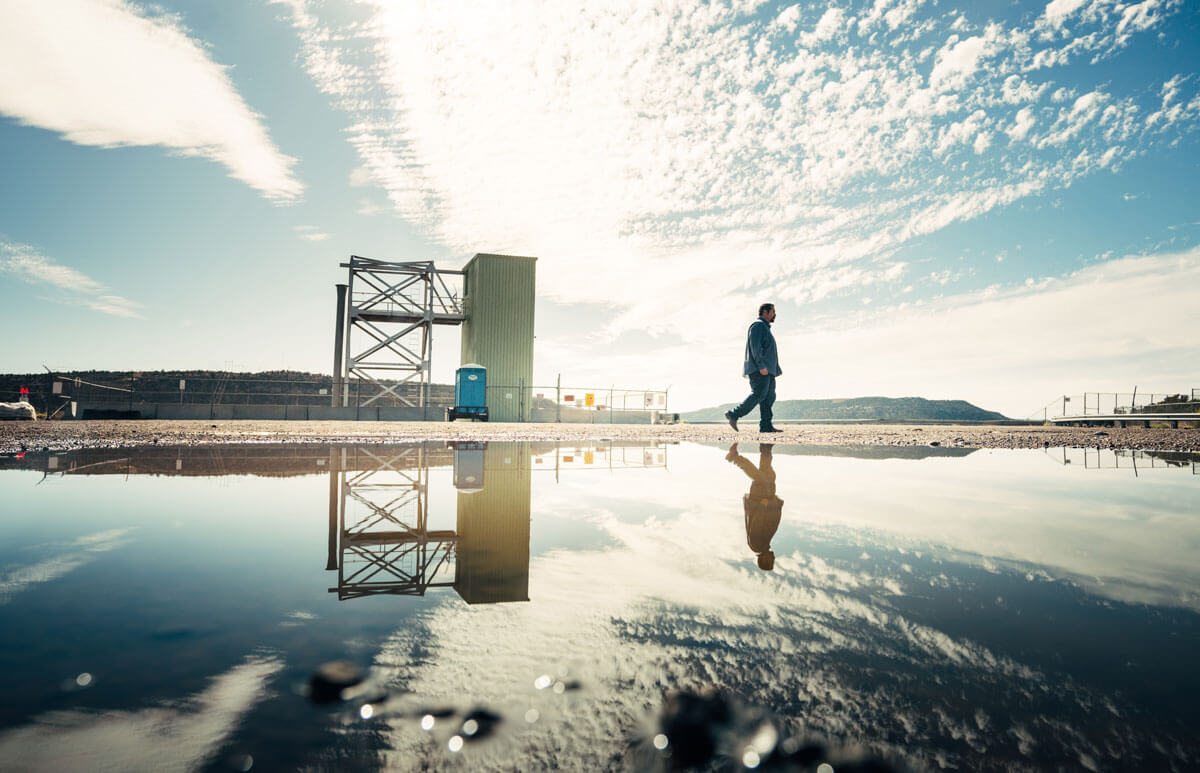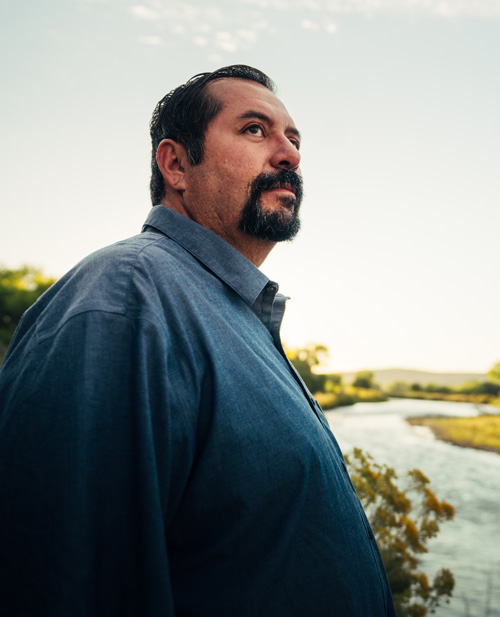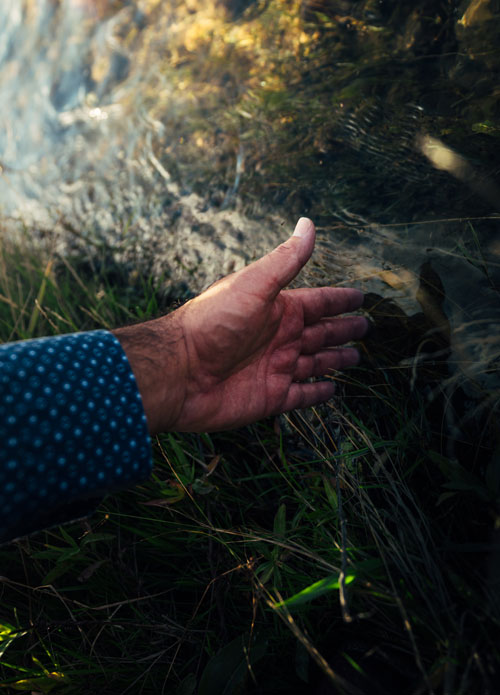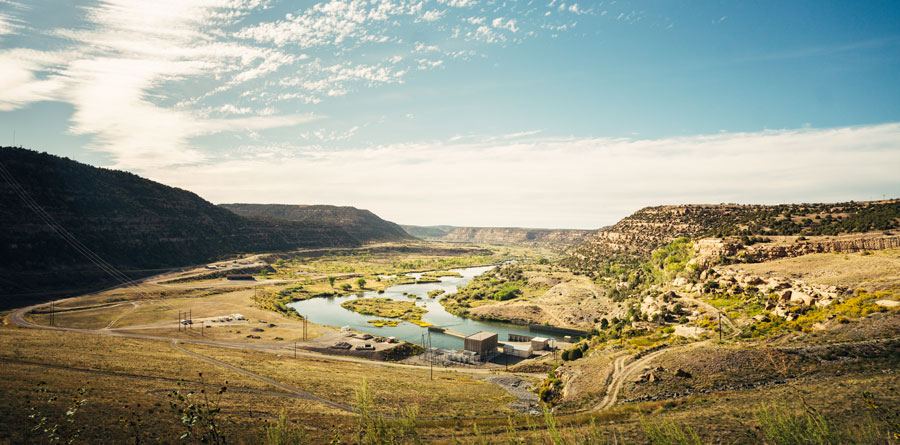The Law of The River: Aaron Chavez and the Future of Water in Northwest New Mexico
Sep / 2024

Some days, a peek at the San Juan River is all Aaron Chavez needs to plan out his to-do list.
As executive director of the San Juan Water Commission, it’s Chavez’s job to manage water delivery to city and rural water users throughout Northwest New Mexico. And in a region where surface water is the only game in town, water availability is something everyone can see. To watch it flowing or to hear it babbling or rushing or trickling along, Chavez says, can be a comfort – or a call to action.
Chavez, who’s based in Farmington, New Mexico, regularly visits the two rivers that converge in town. The San Juan and Animas rivers, both carrying water down from the Rocky Mountains, provide all of the region’s water. “If the rivers are starting to show a lot of rocks and slowing down, it makes me nervous,” he says. “That means everyone's going to start suffering. And when they’re bank-to-bank, I’m wishing we were able to store more of that water.”
New Mexico’s geography is varied, and so, too, are its water systems. In the arid southeast, water is hidden below ground in aquifers. Cities like Santa Fe and Albuquerque tap multiple water sources from a portfolio of supply. But in Chavez’s district, river flows alert everyone to the water that’s available for use. They show the changing of the seasons and the warming of the climate. The rivers’ flows are a constant reminder of a resource that needs careful stewardship.


Balancing Needs in the Basin
The northwest region of New Mexico is part of the Colorado River Basin, a vast system of tributaries that extends into seven western states, irrigates 5.5 million acres of land, and provides water to 1 out of every 10 people in the United States. Managing that water supply and balancing needs among states, Native American tribes, and our downstream neighbor Mexico, has proven challenging — especially in times of drought.
The first 20+ years of the 21st century have been the driest stretch in the American West in more than 1,200 years, and aridification caused by a warming climate has sapped even more moisture from the air – and from our surface water supplies. Reservoir levels have fallen to perilous lows. (Lake Powell dipped to 23 percent of its full capacity in 2023, for example.)
The rules governing the Colorado River Basin are collectively called The Law of the River and build upon statutes developed more than 100 years ago, long before the mega-drought of the past two decades. The Colorado River Compact, signed in 1922, splits 15 million acre-feet of water annually between Upper Basin states and Lower Basin states. As Upper Basin states, it falls to New Mexico, Wyoming, Colorado, and Utah to deliver water to their downstream neighbors: California, Arizona, and Nevada. The trouble is: River flows have decreased by at least 25 percent since the compact’s adoption.
“In dry years, the Lower Basin states still get their full allocation, and we have to rely on snowpack. So if it doesn't snow, we're shorted automatically.” That’s in part because Lower Basin states have some insurance against drought. Lake Mead and Lake Powell are massive human-made reservoirs that deliver water downstream. Though their levels have fallen off over the past two decades, their reserves help ensure the taps don’t run dry even if the clouds and the riverbeds do.
That mammoth storage capacity is a solution Upper Basin users don’t have. As rivers in Northwest New Mexico run dry thanks to drought, users can feel the difference — and see it. In 2002, the Animas River dried up near the confluence of the San Juan River, Chavez remembers. “That sparked interest. People said, ‘What’s going on?’ ‘What are we doing to prevent this from happening again?’”
Dozens of residents participated in regional planning, and public perception of the importance of water storage in the area began to shift. Residents realized its importance.
“We can talk policy until we’re all blue in the face, but when you actually see the water flowing, it makes a difference. Surface water is our lifeline, and I think everyone realizes the importance of it, so we put our differences aside. We work together and communicate and come to a solution.”

Betting on Storage
As he looks to a drier future, Chavez says he’ll be dreaming up ways to protect Northwest New Mexico even further. The solution, he thinks, lies in storage. Chavez was instrumental in the final phases of the Animas-La Plata water project, a storage infrastructure solution green lit in 1956 and finished in 2013. Located just southwest of Durango, Colorado, it allows for the banking of 57,000 acre-feet of water (that is, enough water to supply all of Santa Fe’s water use for over 6 years).
The Animas-La Plata project was controversial — and expensive, costing at least $500 million. Chavez says more storage solutions like this could help offset the impacts of climate change in the region. Scientists anticipate New Mexico will see a decrease in surface-water flows of between 20 and 40 percent over the next 50 years. Despite those projections, Chavez said he can’t help but be optimistic. His region is undertaking a new round of regional planning now, and neighbors are stepping up yet again to find creative ways to steward the region’s most existential resource.
For Chavez, the solution will always lie in compromise. “We want to make sure everyone shares the pain, and we need to come together as a community, as a river basin, and come up with solutions that maybe not everyone's happy with but that everyone can live with.”
